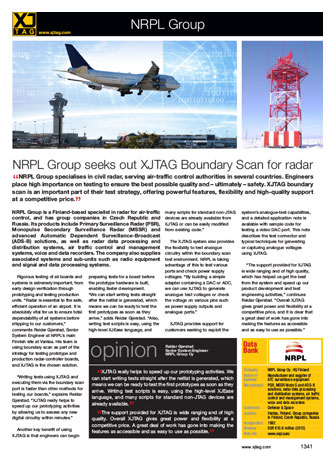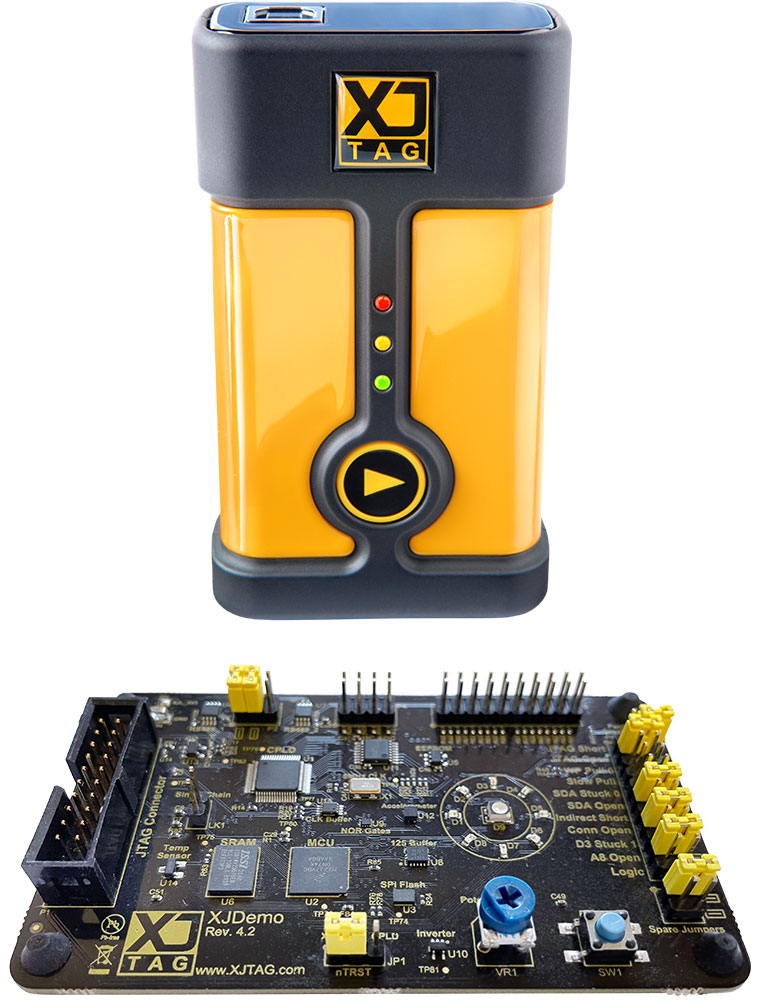
NRPL Group seeks out XJTAG Boundary Scan for radar
NRPL Group specialises in civil radar, serving air-traffic control authorities in several countries. Engineers place high importance on testing to ensure the best possible quality and – ultimately – safety. XJTAG boundary scan is an important part of their test strategy, offering powerful features, flexibility and high-quality support at a competitive price.
NRPL Group is a Finland-based specialist in radar for air-traffic control, and has group companies in Czech Republic and Russia. Its products include Primary Surveillance Radar (PSR), Monopulse Secondary Surveillance Radar (MSSR) and advanced Automatic Dependent Surveillance-Broadcast (ADS-B) solutions, as well as radar data processing and distribution systems, air traffic control and management systems, voice and data recorders. The company also supplies associated systems and sub-units such as radio equipment and signal and data processing systems.
Rigorous testing of all boards and systems is extremely important, from early design verification through prototyping and testing production units. “Radar is essential to the safe, efficient operation of an airport. It is absolutely vital for us to ensure total dependability of all systems before shipping to our customers”, comments Reidar Gjerstad, Senior System Engineer at NRPL’s main Finnish site at Vantaa. His team is using boundary scan as part of the strategy for testing prototype and production radar-controller boards, and XJTAG is the chosen solution.
“Writing tests using XJTAG and executing them via the boundary scan port is faster than other methods for testing our boards”, explains Reidar Gjerstad. “XJTAG really helps to speed up our prototyping activities by allowing us to assess any new digital circuitry within minutes.”
Another key benefit of using XJTAG is that engineers can begin preparing tests for a board before the prototype hardware is built, enabling faster development.
“We can start writing tests straight after the netlist is generated, which means we can be ready to test the first prototypes as soon as they arrive”, adds Reidar Gjerstad. “Also, writing test scripts is easy, using the high-level XJEase language, and many scripts for standard non-JTAG devices are already available from XJTAG or can be easily modified from existing code.”
The XJTAG system also provides the flexibility to test analogue circuitry within the boundary scan test environment. NRPL is taking advantage of this to test various ports and check power supply voltages. “By building a simple adapter containing a DAC or ADC, we can use XJTAG to generate analogue test voltages or check the voltage on various pins such as power supply outputs and analogue ports.”
XJTAG provides support for customers seeking to exploit the system’s analogue-test capabilities, and a detailed application note is available with sample code for testing a video DAC port. This note describes the test connector and typical techniques for generating or capturing analogue voltages using XJTAG.
“The support provided for XJTAG is wide ranging and of high quality, which has helped us get the best from the system and speed up our product development and test engineering activities”, continues Reidar Gjerstad. “Overall XJTAG gives great power and flexibility at a competitive price, and it is clear that a great deal of work has gone into making the features as accessible and as easy to use as possible.”

XJTAG really helps to speed up our prototyping activities. We can start writing tests straight after the netlist is generated, which means we can be ready to test the first prototypes as soon as they arrive. Writing test scripts is easy, using the high-level XJEase language, and many scripts for standard non-JTAG devices are already available.
The support provided for XJTAG is wide ranging and of high quality. Overall XJTAG gives great power and flexibility at a competitive price. A great deal of work has gone into making the features as accessible and as easy to use as possible.

Company: NRPL Group Oy
HQ Finland
Nature of business: Manufacturer and supplier of ATC surveillance equipment
Main product: PSR, MSSR Mode S and ADS-B solutions, radar data processing and distribution systems, air traffic control and management systems, voice and data recorders
Customers: Defense & Space
Location: Vantaa, Finland. Group companies in Finland, Czech Republic, Russia
Incorporated: 1992
Revenue: EUR €10.8 million (2012)
Web site: www.nrpl.aero

Configure your products














